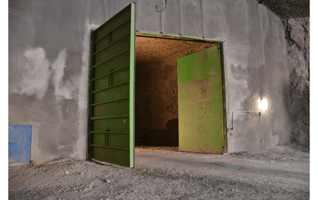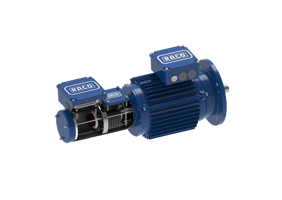Discover the distinct advantages of RACO Electric Linear Actuators and how they push the boundaries...
Decoding the Differences: RACO LT2060 vs. RACO LM Linear Actuators
Decoding the Differences: RACO LT2060 vs. RACO LM Linear Actuators
When building industrial automation systems, choosing the right linear actuator is crucial for performance, longevity, and system flexibility. RACO International, a leader in linear motion solutions, offers both the robust LT2060 power screw driven actuator and the highly versatile belt driven LM linear module. While both excel in precise motion control, their design and performance characteristics suit them to different tasks. Let’s explore their unique features and ideal applications.
RACO LT2060: Engineered for Precision and Power
How it works:
The LT2060 features either an ACME screw or a precision ground ball screw driven carriage supported within a robust aluminum profile. This design is optimized for applications demanding high load capacity, delivering linear thrust up to 4,500 lbs.
Key Advantages:
- Heavy-Duty Performance: Capable of carrying significant load forces, torques, and bending moments.
- Environmental Protection: A magnetic tape cover shields internal components from rain, dust, and snow, ensuring durability even in harsh conditions.
- Long Strokes and High Thrust: Move loads up to 5,000 mm (196”) at speeds up to 750 mm/s (30”/sec).
- Precision: Outstanding positioning accuracy of up to > 0.5 mm (0.02”).
- Customizability: Wide range of drive configurations and accessories available.
Best For:
LT2060 actuators are ideal for single-axis applications where large, heavy loads must be positioned precisely, and the environment may contain contamination from the elements.

RACO LM Linear Module: Lightweight, Fast, and Modular
How it works:
The LM is built on a steel cord reinforced timing belt, providing zero backlash and driving a carriage that travels on roller bearings cushioned by shock-absorbing elastomer tires.
Key Advantages:
- High Speed: Carriage speeds up to 200 inches per second, making it perfect for rapid positioning tasks.
- Long Travel: Stroke range up to 20 feet (with single extrusion), ideal for processes demanding extended motion.
- Modularity: Can be configured as single-axis, parallel, XY, or even XYZ motion systems—great for building complex automation setups.
- Medium Load Capabilities: Supports single modules with loads up to 800 lbs.
- Flexibility: Lightweight construction makes it easy to adapt and integrate.
Best For:
LM modules are favored in process automation scenarios where high speed and system adaptability are priorities, such as packaging, pick-and-place, or material handling systems requiring multi-axis movement.

LM4 XYZ Configuration

RACO LM 3

RACO LM4 Breakdown
Side-by-Side Comparison
| Feature | LT2060 | LM Linear Module |
|---|---|---|
| Drive Mechanism | ACME Screw or Ball Screw | Steel Cord Reinforced Timing Belt |
| Max Thrust / Load | up to 4,500 lbs. | up to 800 lbs. (single module) |
| Max Stroke | 5,000 mm (196”) | ~20 feet (single extrusion) |
| Max Speed | 750 mm/s (30”/sec) | 5,080 mm/s (200 in/sec) |
| Positioning Accuracy | > 0.5 mm (0.02”) | > 0.08 mm (0.003”) |
| System Configurability | Wide range of accessories | Single, parallel, XY, XYZ, modular setups |
| Environmental Protection | Magnetic tape cover shields mechanism | Recommended for indoor use |
| Application Focus | Heavy-duty, high-precision, single-axis | High-speed, multi-axis, modular, lightweight |
Choosing the Right Module
- Pick the LT2060 when you need high force, exceptional positional accuracy, and robust environmental protection.
- Choose the LM if your priority is rapid, extended travel, versatility in system design, and ease of integration for multiple axes.
Investing time to match actuator capabilities to your application can make a world of difference in system performance, longevity, and maintenance costs.

.png?width=1584&height=396&name=Untitled%20design%20(7).png)
%20(2).png?height=200&name=Untitled%20(5%20x%205%20in)%20(2).png)

